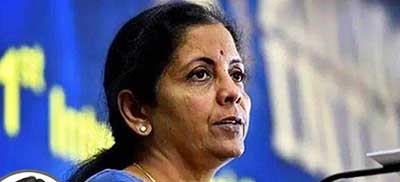Relevance: GS-3: Government Budgeting
Key Phrases: Off-budget borrowings,net borrowing ceilings,Fiscal transparency,future debt servicing,Article 293(3),Article 280.
Why in News?
- The union government has declared that states’ off-budget borrowings
will be equated with the state governments’ own debt.
- State governments have been resorting to these measures through state-owned entities.
- This will shed light on a segment of state debt that has escaped the Centre’s oversight in the past.
- Equating states’ off-budget borrowings with their debt will clarify the extent of their indebtedness.
Key Highlights:
- At the start of every financial year, the Net borrowing ceiling of state
governments is clarified by the Union government.
- But from this year, changes regarding off-budget borrowings will be enforced.
- This can be challenging for some state governments, as they have often resorted to off-budget borrowings during the pandemic.
Constitutional Provision:
- Article 293 (3) of the Constitution states that the state governments are required to take the centre’s permission for fresh borrowing if they are indebted to the Government of India.
Methodology of Fiscal Deficit Target of States:
- It is typically recommended by the Government of India-appointed finance
commission (Article 280) for a 5 year period
- It is accepted or modified by the Centre.
- The base fiscal deficit is usually defined in terms of a percentage rate, that is uniformly applicable to all state governments.
- This uniform rate is then applied to the Centre’s estimate of each
state’s gross state domestic product (GSDP) for a particular fiscal year
to determine the absolute net borrowing ceiling for that year.
- The borrowing ceiling set in this manner acts as a soft constraint to that year’s state-wise fiscal deficit.
Fiscal Deficit Targets For 2022-23:
- The fiscal deficit ceiling is communicated to the states at the start of each financial year.
- For 2022-23, the ceiling has been set at 4% of GSDP.Out of this
borrowing, 3.5% of GSDP is unconditional.
- But, 0.5% of additional borrowings have been allowed, conditional on each state’s achievement of power sector reforms.
- A caveat: Under special assistance to the states, a capital investment scheme of Rs 1 lakh crore will be provided as loans by the Centre to the states. This will be in addition to the above mentioned 4% of the GSDP borrowing ceiling.
Changes Introduced:
- Firstly, as discussed above, off-budget borrowings are to be equated with the states’ own debt.
- Secondly, incremental off-budget borrowings that have been undertaken in the last two years (2020-21 and 2021-22) will be adjusted out of the borrowing ceiling this year.
What are Off-Budget Borrowings?
- These refer to loans taken by state government entities, special purpose
vehicles, etc., which are expected to eventually be serviced through the
state government’s own budget at a later stage.
- Hence, they aren’t paid off by the cash flows or revenues generated by the borrowing entity.
- It resembles a mere accounting exercise and allows state governments to circumvent fiscal discipline.
The Rationale for These Changes
- This change is a watershed decision for state finances.
- It will bring fiscal transparency to an area that has been cloaked
in opacity.
- As per the monthly summary of the Department of Expenditure for March, a proliferation of such borrowings has been observed.
- It will help the states to respect the provisions enshrined in the respective state Fiscal responsibility and budget management acts.
- To ensure long term sustainability of borrowings
- These interest obligations and the repayment of the principal could widen states’ deficits significantly and compress the fiscal space available for other expenditure priorities.
- For accurate estimation of these borrowings,
- Hard data on such loans are exceedingly difficult to excavate.
- Recording them will help in proper planning.
- It will bring fiscal transparency to an area that has been cloaked
in opacity.
Conclusion:
- The usage of liquidity facilities provided by the RBI such as the ways and means of advances (WMA) and overdrafts will be utilised by some states to fight off the liquidity crunch. But, this difficult yet necessary step will be a milestone in restricting the Debt-to-GDP ratio to 20% for states (as per the recommendation of the N K Singh review committee).
Source: The Indian Express
Mains Question
Q What is the new provision of the union government regarding the off-budget borrowings of the state? How will it help in achieving fiscal transparency?







